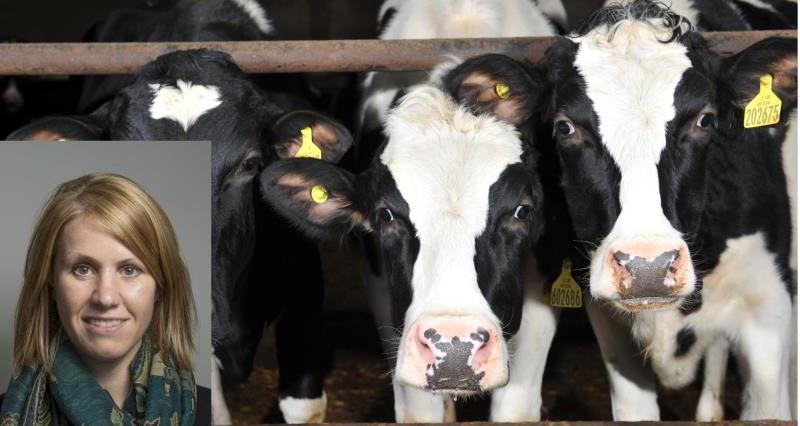Our chief dairy adviser Sian Davies writes:
Ireland, as we already know, is highly dependent on the UK market but we must not forget the border between Ireland and Northern Ireland. A third of the Irish dairy export portfolio is destined for the UK, and it’s as high as 60% for their cheese exports. That said, of the 2.2 billion litres of milk produced in Northern Ireland last year, 600 million litres was transported over the border to Ireland.
While our nearest neighbour Ireland is a complete world away in terms of the dairy supply chain. Mainly co-operative, only 8% of its milk production is processed into liquid and of this, 500 million litres, around 25%, is imported from the UK, over the Northern Irish border. This compares to around 5.9 billion litres of milk used for manufacturing - 60% processed into butter, 25% into cheese and the rest into powder of various configurations.
The Irish Dairy Industry Association (IDIA) has set up a Brexit taskforce and a timeline of engagement which rivals our own at the NFU. They are working closely with UK and EU counterparts to better understand the impact of Brexit on the Irish dairy sector.
It was useful when we visited ICOS, which represents 130 co-ops in the Republic and up to 97% of Irish Milk Production, to hear of their support for members and farmers with policy development and lobbying, governance and rules, finance and pensions and training and development. One recent call has been for a 555 tax scheme where farmers would be allowed to put 5% of their income away in a good year untaxed to be used in a crisis year. This wasn’t supported by the Irish Government in their most recent Budget.
The benefit of dairy co-operation and collaboration was clearly evident at Ornua, previously the Irish Dairy Board. Ireland exports 85% of its dairy production to 110 countries worldwide. Just over two thirds of this is to the EU and a third to non EU markets. This is mainly done by Ornua, a co-operative of co-operatives which markets dairy on behalf of most of individual Irish co-ops under the banner of Kerrygold. This has ensured that Kerrygold butter is the number one butter brand in Germany and the number three butter brand in the US, and importantly holds its premium price above competitors. Of late Ornua has invested heavily in volatility management helping individual co-ops set in place fixed term, fixed price contracts, suspending farmer levy payments and continuing to ensure a price, the Ornua purchased price index (PPI) above the average price – currently at 27.9 €/c.
The visit also saw us meet up with the Irish Farmers Association to learn about its structure and dairy priorities. The IFA’s 75,000 members are split into 950 branches and 29 county executives. The Executive council, equivalent to our NFU Council, meets monthly and is made up of 53 permanent members while sector committees normally meet quarterly and are made up of 30 members.
One difference between the NFU and IFA was the use of 4,000 voluntary activists who support the association’s work at grass roots. The main dairy concern in Ireland, like the UK, is milk price. In July Irish farmers saw their first milk price increase in three years but importantly many have availed of fixed price fixed term contracts or price support from the co-operative. Going forward environmental concerns abound – both on the need for a renewal of the Nitrates derogation and the ability to achieve GHG emission reduction targets.
In terms of recent wins the IFA has secured concessions to the five year tax averaging scheme in the recent Irish budget – allowing farmers to step out of the scheme in extremely bad market years – and a new low interest loan fund of €150 million. This is how the IFA has proposed that the Irish Government utilise the EU National Aid scheme and Government has boosted the fund from the national budget.
On Brexit the message was clear – Ireland will still need to trade with the UK regardless of what happens. Pre joining the EU 70% of overall Irish food exports were destined for the UK. Today this is 41% but some sectors are far more exposed than others. Half of Irish beef exports come to the UK and 60% of pigmeat exports. The direct impact of Brexit could be seen on the Irish mushroom industry who were wholly reliant on the UK market and had agreed a forward £ price. The currency impact has led to two of the 60 Irish mushroom farmers to cease production already.
It’s clear that we’ll need to continue to keep the dialogue open with Ireland over the next few years as we disentangle the Brexit puzzle.
